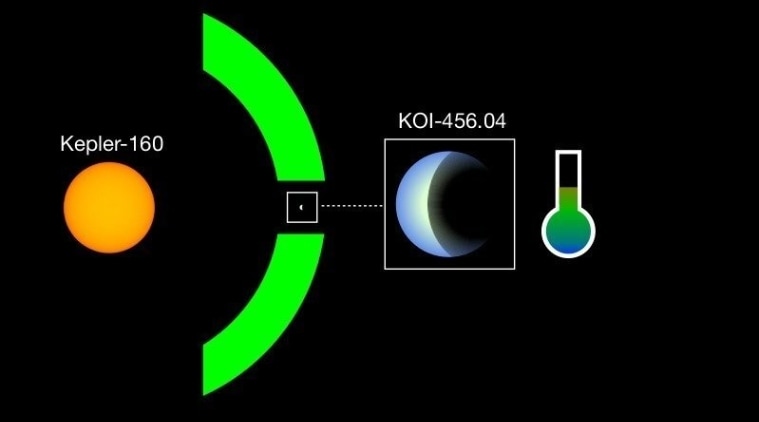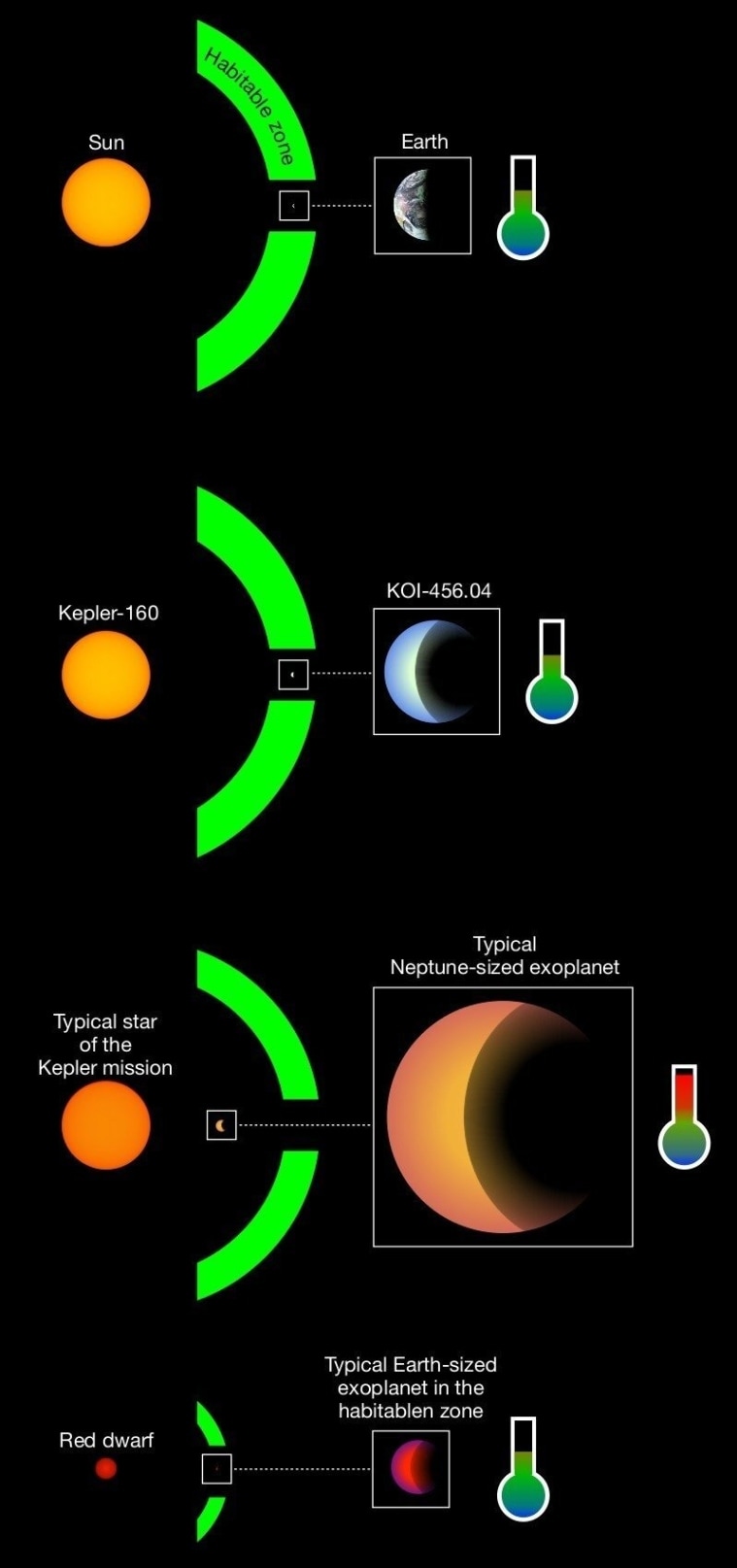 The newly discovered planet candidate KOI-456.04 and its star Kepler-160 (second panel from above) have great similarities to Earth and sun (top panel). Credit: MPS / René Heller
The newly discovered planet candidate KOI-456.04 and its star Kepler-160 (second panel from above) have great similarities to Earth and sun (top panel). Credit: MPS / René Heller
From manned space missions to unique soft robots, a lot happens in the world of science, but most of the small stuff go unnoticed under the big news every day. That is why we are starting a weekly wrap of important science stories of the week so that you can get all the news at a single place without having to fish for stories everywhere. Here’s what happened in the world of science from June 1 to June 7, 2020:
Mirror image of Earth and Sun
A team of researchers led by the Max Planck Institute for Solar System Research in Göttingen discovered an exoplanet KOI-456.04, which is less than twice the size of the Earth and orbits a sun-like star. Most of the known exoplanets orbit dwarf stars that emit infrared light, instead of visible light. However, this exoplanet’s host star actually emits visible light. What’s even more fascinating is that Kepler 456.04 orbits its star at a distance similar to that between Earth and Sun and within the habitable zone. The planet is 3000 light-years away from the solar system, receives about 93 per cent of the sunlight received on Earth, could have liquid water on its surface, and has an Earth-like atmosphere.
 Distant worlds: typical exoplanets orbiting around a sun-like star are about the size of Neptune and are in orbithabitable zone (third picture from above). Almost all of the Earth-sized planets known to have potentially Earth-like surface temperatures are in orbit around red dwarf stars, which do not emit visible light but infrared radiation instead (bottom panel). The Earth is in the right distance from the sun to have surface temperatures required for the existence of liquid water. The newly discovered planet candidate KOI-456.04 and its star Kepler-160 (second panel from above) have great similarities to Earth and sun (top panel). Credit: MPS / René Heller
Distant worlds: typical exoplanets orbiting around a sun-like star are about the size of Neptune and are in orbithabitable zone (third picture from above). Almost all of the Earth-sized planets known to have potentially Earth-like surface temperatures are in orbit around red dwarf stars, which do not emit visible light but infrared radiation instead (bottom panel). The Earth is in the right distance from the sun to have surface temperatures required for the existence of liquid water. The newly discovered planet candidate KOI-456.04 and its star Kepler-160 (second panel from above) have great similarities to Earth and sun (top panel). Credit: MPS / René Heller
Gene-editing tool that can destroy Covid-19
Stanford University scientists developed an antiviral agent against Covid-19 that can target and destroy specific genetic strands of the SARS-CoV-2 inside the human cell. As per the report, the tool called PAC-MAN or Prophylactic Antiviral CRISPR in human cells has been tested in the laboratory on human lung cells infected with the virus and has shown promise. The tool is composed of an enzyme Cas13 to destroy sequences in the coronavirus’ genome and a strand of guide RNA which commands the enzyme. The team behind PAC-MAN wants to test the system in an animal model against a live SARS-CoV-2 virus.
Second lunar eclipse of 2020
 Lunar Eclipse June 5-6. (Express Photo: Karanveer Singh Arora)
Lunar Eclipse June 5-6. (Express Photo: Karanveer Singh Arora)
This week also saw the second lunar eclipse of the year 2020. The penumbral lunar eclipse started at 11:15 pm on June 5 with the maximum eclipse occurring at 12:54 am on June 6 and the Moon coming out of the faint shadow of Earth’s penumbra at 2:34 am. A penumbral lunar eclipse happens when the Sun, Earth, and the Moon are imperfectly aligned and the Earth blocks some of the Sun’s light from directly reaching the Moon with the outer part of its shadow.
Chances of finding young Earth-like planets higher
Researchers from the University of Sheffield claim that the chances of finding Earth-like planets in their early stages of formation are much higher than previously thought. They studied groups of young stars in the Milky Way to study if the populations of stars in these groups affected the likelihood of finding forming Earth-like planets. The research, published in The Astrophysical Journal, found that there are more stars like the Sun than expected in these groups, which would increase the chances of finding Earth-like planets in their early stages of formation.